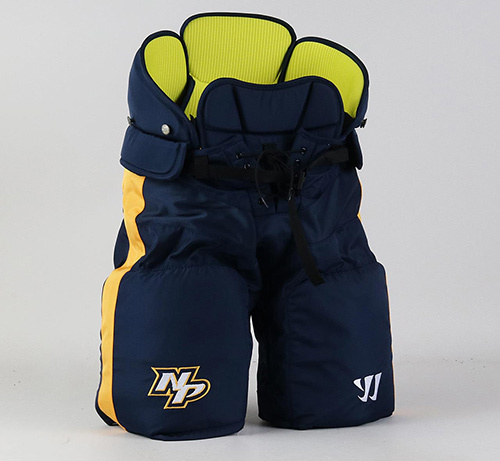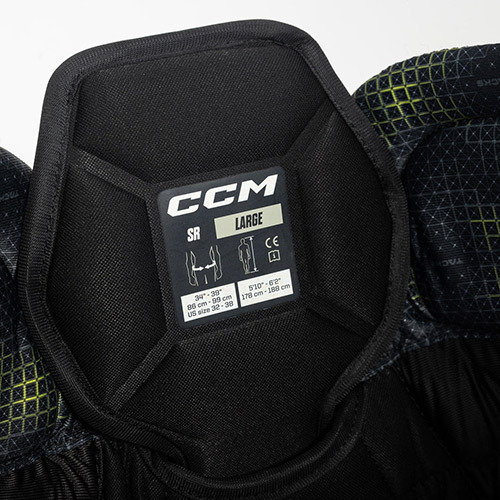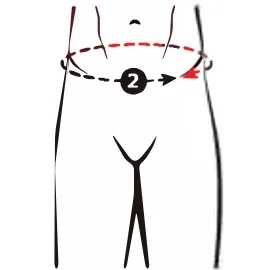Learning how to choose hockey pants isn’t just a beginner’s concern—it’s a key decision for skaters at every level. Ill-fitting pants can compromise protection, hinder movement, and distract from your performance. Whether you’re stepping onto the ice for the first time or upgrading your gear for a new season, making the right choice ensures comfort, safety, and confidence every shift.
This hockey pants fitting guide outlines how to measure accurately, select pants by position, and maintain them for long-lasting use, diving into key differences in fit between youth and adult players and how different styles and materials can impact your gameplay.
Why Fit Matters in Hockey Pants

The right pant fit impacts every movement; pants that are too loose may shift during skating or expose vulnerable areas. Too tight, and they can restrict stride and cause discomfort. Poorly fitted pants may also interfere with other gear like shin guards for leg protection or hockey socks for coverage, leading to overlapping or gaps that compromise hockey pants protection.
A proper fit helps prevent chafing, gear overlap, and shifting; it also ensures lower body protection, particularly for the thighs, hips, tailbone, and kidneys. Fit affects every type of player—from youth athletes to professionals—and benefits parents, coaches, and hockey equipment managers by reducing injuries and replacements. Properly fitted pants also extend the lifespan of other lower body protective gear, minimizing wear on neighboring equipment pieces.
Players who experience discomfort often assume it stems from skates or shin guards, when in fact, poor-fitting pants are the root cause. Selecting the right pair can improve stride, balance, and even recovery time by reducing unnecessary fatigue and friction. This makes a solid fit foundational to both safety and peak performance.
Key Fit Features to Look For

Understanding the different components of a hockey pant is crucial. Pants should cover essential protection zones, including:
- Kidneys
- Hips
- Tailbone
- Thighs
They should also overlap slightly with shin guards without leaving a gap. Adjustable belts, lace-up fronts, and segmented padding help secure the pants for a snug yet comfortable feel. These design elements allow skaters to move naturally while staying protected.
Fit style is another factor:
- Classic fit: Loose and breathable
- Tapered fit: Slimmer cut for increased mobility
Choosing between tapered vs classic fit pants depends on skating style and personal preference. Classic pants allow more airflow and freedom but can feel bulky to fast-moving players, while tapered pants are often preferred for quick pivots and aggressive acceleration.
Materials also play a role in comfort and function; most hockey pants use a combination of nylon shells and foam or plastic padding, and higher-end models may offer enhanced breathability or reinforced stitching for added durability. These differences can become pronounced during high-intensity games and long practice sessions.
Fitting by Player Position

Selecting hockey pants by position offers features tailored to specific play styles:
- Forwards benefit from lightweight, flexible pants that support quick direction changes.
- Defensemen often opt for longer, heavily padded pants to block shots and absorb contact.
- Players who emphasize speed and agility tend to prefer tapered cuts for less drag.
The balance between player mobility and protection is crucial. Defense-first players often prioritize thicker thigh pads, while offensive skaters focus on reducing gear weight for faster movement.
Positional needs also affect how you pair pants with other equipment. For example, shot-blocking defensemen should safeguard integration with pant shells and girdles to avoid shifting during dives or turns. Forwards aiming for speed should ensure no restriction at the hips or knees, even when layering with base garments.
Coaches and retailers can help advise players based on role and playing style. Helping a defenseman choose a speed-focused pant may lead to exposure and discomfort, while recommending a bulky pant for a finesse forward could hinder acceleration.
Choosing the Right Pant Size

To find your hockey pants size, measure:
- Waist: At the navel, where the pants should sit
- Height: Referenced alongside waist for accurate sizing
Use resources like Pro Stock Hockey’s sizing charts to compare measurements. Pants should never pinch at the waist or bunch up around the thighs; they should comfortably overlap your shin guards without sagging or lifting.
Too-tight pants will cause restriction in crossovers, deep knee bends, and quick stops. On the other hand, too-loose pants will twist during play and may cause uneven coverage, increasing injury risk. Aim for a middle ground—a snug fit that allows movement while keeping all protective pads in place.
For growing athletes, youth vs adult hockey pants differ in fit and adjustability. Sizing youth gear features options often include extra flexibility, adjustable straps, and growth-friendly designs; these features accommodate rapid changes in body size throughout a season.
Also consider leg and hip proportions: some players may have shorter torsos or longer legs relative to their waist size, requiring a custom approach to sizing hockey pants. When in doubt, try pants on while wearing full gear (jock, base layer, shin guards) to confirm total fit.
Get the Best Fit for Your Game
Before buying, try on multiple styles and compare across brands. Hockey gear fit can run the gamut, even between similar sizes. Whether you’re shopping for your first pair or upgrading for performance, prioritize protection and flexibility—confident players start with the correct gear.
Reevaluate your pants annually, as even adult players can change in shape, and newer designs may offer a better fit or lighter feel. Comparing models with different materials and pad configurations can help you fine-tune comfort and control.
Shop hockey pants that fit your position today to improve your edge on the ice.


